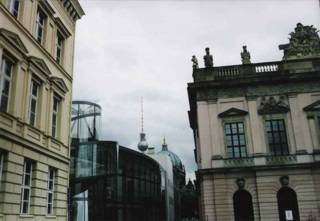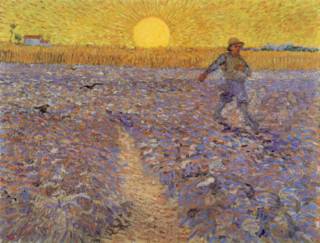Saturday, February 26, 2005
Wednesday, February 23, 2005
The New York Times > Opinion > Op-Ed Columnist: The Secret Genocide Archive
Photos don't normally appear on this page. But it's time for all of us to look squarely at the victims of our indifference.
These are just four photos in a secret archive of thousands of photos and reports that document the genocide under way in Darfur. The materials were gathered by African Union monitors, who are just about the only people able to travel widely in that part of Sudan.
This African Union archive is classified, but it was shared with me by someone who believes that Americans will be stirred if they can see the consequences of their complacency.
The photo at the upper left was taken in the village of Hamada on Jan. 15, right after a Sudanese government-backed militia, the janjaweed, attacked it and killed 107 people. One of them was this little boy. I'm not showing the photo of his older brother, about 5 years old, who lay beside him because the brother had been beaten so badly that nothing was left of his face. And alongside the two boys was the corpse of their mother.
The photo to the right shows the corpse of a man with an injured leg who was apparently unable to run away when the janjaweed militia attacked.
At the lower left is a man who fled barefoot and almost made it to this bush before he was shot dead.
Last is the skeleton of a man or woman whose wrists are still bound. The attackers pulled the person's clothes down to the knees, presumably so the victim could be sexually abused before being killed. If the victim was a man, he was probably castrated; if a woman, she was probably raped.
There are thousands more of these photos. Many of them show attacks on children and are too horrific for a newspaper.
One wrenching photo in the archive shows the manacled hands of a teenager from the girls' school in Suleia who was burned alive. It's been common for the Sudanese militias to gang-rape teenage girls and then mutilate or kill them.
Another photo shows the body of a young girl, perhaps 10 years old, staring up from the ground where she was killed. Still another shows a man who was castrated and shot in the head.
This archive, including scores of reports by the monitors on the scene, underscores that this slaughter is waged by and with the support of the Sudanese government as it tries to clear the area of non-Arabs. Many of the photos show men in Sudanese Army uniforms pillaging and burning African villages. I hope the African Union will open its archive to demonstrate publicly just what is going on in Darfur.
The archive also includes an extraordinary document seized from a janjaweed official that apparently outlines genocidal policies. Dated last August, the document calls for the "execution of all directives from the president of the republic" and is directed to regional commanders and security officials.
"Change the demography of Darfur and make it void of African tribes," the document urges. It encourages "killing, burning villages and farms, terrorizing people, confiscating property from members of African tribes and forcing them from Darfur."
It's worth being skeptical of any document because forgeries are possible. But the African Union believes this document to be authentic. I also consulted a variety of experts on Sudan and shared it with some of them, and the consensus was that it appears to be real.
Certainly there's no doubt about the slaughter, although the numbers are fuzzy. A figure of 70,000 is sometimes stated as an estimated death toll, but that is simply a U.N. estimate for the deaths in one seven-month period from nonviolent causes. It's hard to know the total mortality over two years of genocide, partly because the Sudanese government is blocking a U.N. team from going to Darfur and making such an estimate. But independent estimates exceed 220,000 - and the number is rising by about 10,000 per month.
So what can stop this genocide? At one level the answer is technical: sanctions against Sudan, a no-fly zone, a freeze of Sudanese officials' assets, prosecution of the killers by the International Criminal Court, a team effort by African and Arab countries to pressure Sudan, and an international force of African troops with financing and logistical support from the West.
But that's the narrow answer. What will really stop this genocide is indignation. Senator Paul Simon, who died in 2003, said after the Rwandan genocide, "If every member of the House and Senate had received 100 letters from people back home saying we have to do something about Rwanda, when the crisis was first developing, then I think the response would have been different."
The same is true this time. Web sites like www.darfurgenocide.org and www.savedarfur.org are trying to galvanize Americans, but the response has been pathetic.
I'm sorry for inflicting these horrific photos on you. But the real obscenity isn't in printing pictures of dead babies - it's in our passivity, which allows these people to be slaughtered.
During past genocides against Armenians, Jews and Cambodians, it was possible to claim that we didn't fully know what was going on. This time, President Bush, Congress and the European Parliament have already declared genocide to be under way. And we have photos.
Sunday, February 20, 2005
Friday, February 04, 2005
The English language is missing a word
Report: EPA pollution plan won't cut it
The EPA's Office of the Inspector General said the rules should be written again after an "unbiased analysis" of how much mercury plants should be allowed to emit.Press Gaggle with Scott McClellan--Aboard Air Force One January 14, 2005
...
Agency spokeswoman Cynthia Bergman disputed the Inspector General's report, saying the inspector general simply "disagreed" with the EPA's approach. She said the agency would not redo the proposal and would make the rule final by mid-March.
Q Does the President disagree with the report's conclusion that the war and the uncertainty on the ground has created a breeding ground for terrorism?Press Gaggle with Scott McClellan--Aboard Air Force One November 20, 2004
MR. McCLELLAN: Well, we would strongly disagree with any characterization that suggested or implied that the way detainees are being treated at Guantanamo Bay are inconsistent with the policy that the President outlined. I'm not going to get into discussing specific reports by the International Committee for the Red Cross. These are confidential reports that are provided to the commanders on the ground -- and the incidents you're talking about, it would be to commanders in Guantanamo Bay. And we stay in close contact with the Department of Defense on these matters and issues that are raised, and to make sure that the Department of Defense is following up, or following through on those issues that are raised.And finally, this longer bit shows why we need this word.
Press Gaggle with Scott McClellan--White House June 17, 2004
Q It is not consistent. They said this business on the nexus -- sinister nexus is not so.
MR. McCLELLAN: Where did they say that?
Q It's in the story.
MR. McCLELLAN: Okay.
Q No collaborative relationship.
MR. McCLELLAN: Go ahead, Terry.
Q Well, I'll pick up on that, if I may.
MR. McCLELLAN: Well -- and we never said that there was operational ties involved in attacks on the United States. Let's be very clear about that. The President talked about that just a short time ago.
Q What are people supposed to conclude, that they're having lunch with each other?
MR. McCLELLAN: A short time ago in his remarks.
Q You talk about deep, long-standing ties. What is that supposed to mean?
MR. McCLELLAN: Saddam Hussein supported and harbored terrorist groups --
Q Why don't you just say the commission is wrong?
MR. McCLELLAN: All right.
Q Well, because the terms that you did use, "deep, long-standing ties -- sinister nexus," and the President himself saying, "By removing Saddam Hussein we have removed an ally of al Qaeda," that means they are working together. Did Saddam Hussein and al Qaeda work together, where and when?
MR. McCLELLAN: I disagree with your characterization about --
Q Well, what does "ally" mean?
MR. McCLELLAN: But Saddam Hussein's regime and al Qaeda had a common enemy: It was the United States of America. And when you talk about a regime that has a history of supporting and harboring terrorists, and has a history of using weapons of mass destruction on its own people and on its neighbors, and then you look at the world through the lens of September 11th, the President made the absolute right decision to go in and remove that regime from power.
Q That's an argument. Those are not facts.
MR. McCLELLAN: One of the most dangerous --
Q That's just an argument. The facts as determined do not bear out that argument.
MR. McCLELLAN: One of the most dangerous threats we face in this day and age is the nexus between outlaw regimes with weapons of mass destruction and --
Q But you didn't find any.
MR. McCLELLAN: -- terrorist organizations. And the President acted, based on the information that we outlined, and that you can go back and look at. It's public information. Secretary Powell speaking before the United Nations --
Q Who has repudiated his own testimony.
MR. McCLELLAN: -- and Director Tenet testifying before Congress about these ties.
Q And just to button this down, the President stands by his statement that Saddam Hussein and al Qaeda were allies.
MR. McCLELLAN: Again, if you go back and look at the facts --
Q I'm asking what the President would say today.
MR. McCLELLAN: He stands by saying that Saddam Hussein's regime had ties to terrorism, including al Qaeda. And the basis of that is what I pointed out in Secretary Powell's remarks and Director Tenet's remarks. And that is consistent with what the September 11th Commission said. The relationship and contacts go back over the last decade.
Wednesday, February 02, 2005
Free Media, Schmee Media
The way many high school students see it, government censorship of newspapers may not be a bad thing, and flag burning is hardly protected free speech.
It turns out the First Amendment is a second-rate issue to many of those nearing their own adult independence, according to a study of high school attitudes released Monday.
The original amendment to the Constitution is the cornerstone of the way of life in the United States, promising citizens the freedoms of religion, speech, press and assembly.
Yet, when told of the exact text of the First Amendment, more than one in three high school students said it goes "too far" in the rights it guarantees. Only half of the students said newspapers should be allowed to publish freely without government approval of stories.



